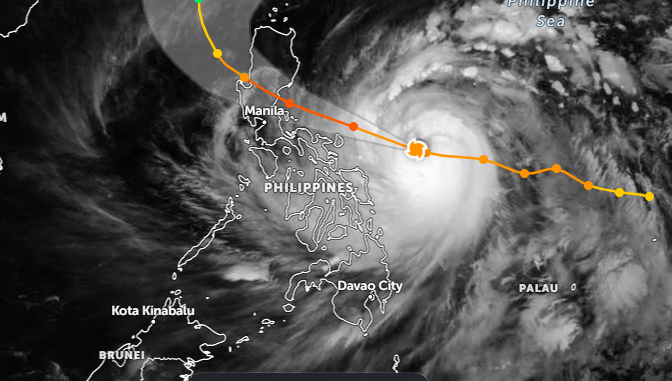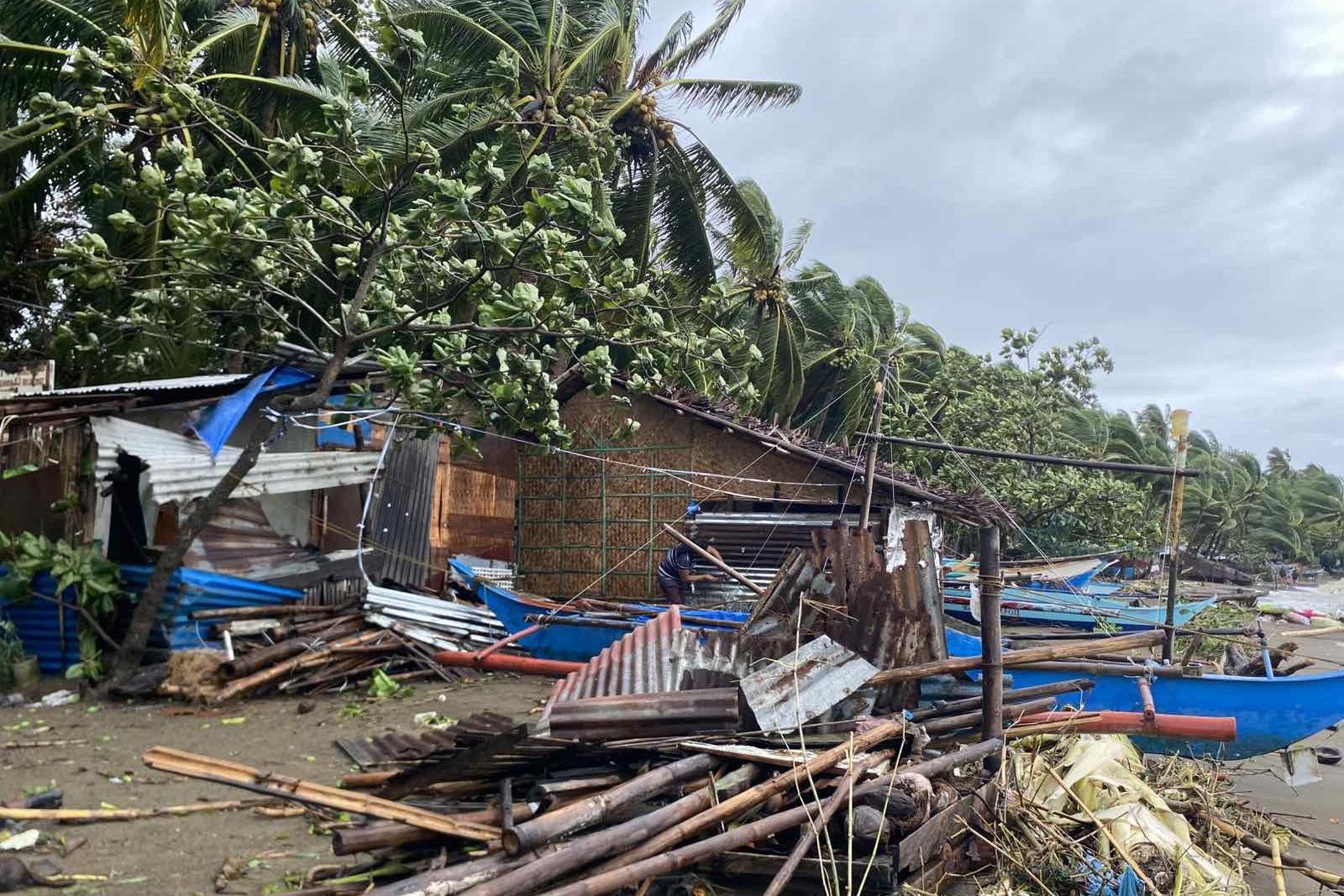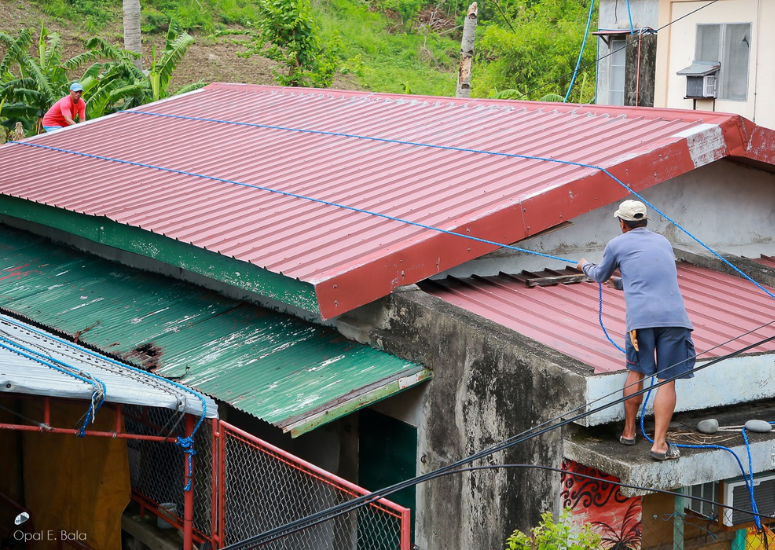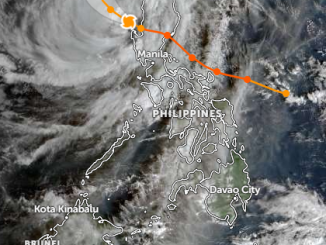
Published November 8, 2025
The Philippines is once again on edge as Typhoon Uwan (international name Fung-Wong) barrels toward the country, only days after Typhoon Tino ravaged parts of the Visayas region—leaving behind wreckage, power outages, and hundreds of displaced families in its wake.
A Nation Still Reeling
In the first week of November, Typhoon Tino tore through the central Philippines, particularly Cebu province, where flash floods submerged communities and strong winds uprooted homes and power lines.
The storm’s fury brought back memories of Super Typhoon Yolanda (Haiyan), which devastated the Visayas in 2013. Residents described the experience as “a nightmare revisited,” with rising waters trapping families in their homes and roofs flying off during the peak of the storm.
Local governments in Cebu and neighboring provinces scrambled to evacuate residents as rainfall reached extreme levels. Flights were grounded, ports were shut down, and entire towns were plunged into darkness as floodwaters swept through low-lying areas.
By the time Tino exited the Philippine Area of Responsibility (PAR), it had left a trail of destruction—more than a hundred dead, billions of pesos in damage, and thousands of families homeless. Recovery operations continue as rescuers dig through debris, while relief workers deliver food and aid to isolated barangays.
A New Threat Looms
Even before Tino’s aftermath could settle, meteorologists began tracking another looming system over the Pacific—Tropical Cyclone Fung-Wong, which entered the PAR on Friday and was given the local name Typhoon Uwan.
According to PAGASA, Uwan has rapidly intensified and could reach Super Typhoon status within days, with projected Signal No. 5 warnings over parts of Northern and Central Luzon. It currently packs maximum sustained winds of over 110 km/h and gusts exceeding 135 km/h, moving west-northwest toward Luzon.
Initial forecasts placed its path toward the Visayas, but a shift in its track now points to possible landfall between Isabela and Aurora provinces late Sunday or early Monday. This development brings little comfort to the millions still recovering from Tino’s wrath.
The Department of Social Welfare and Development (DSWD) estimates that up to 8.4 million people could be affected by Uwan’s impact, depending on its final trajectory. Disaster preparedness councils across Luzon are now on high alert, issuing early evacuation orders in coastal and mountainous areas prone to landslides and storm surges.
Typhoon Uwan (International name: Typhoon Fung‑Wong)
Prayers and Precautions
Across the archipelago, communities are once again praying for safety. Churches have opened their doors for shelter, while families stock up on food and secure their homes ahead of Uwan’s approach.
In Cebu, where Tino caused massive flooding, many residents admit they haven’t yet recovered. “We haven’t even cleared the mud from our homes,” said one mother from Mandaue. “And now another storm is coming. We can only pray it changes direction.”
Government agencies have urged the public to rely only on official weather bulletins. PAGASA has also reminded citizens not to spread unverified information about the storm’s path to prevent panic.
From Tragedy to Vigilance
While Typhoon Uwan’s strength and path remain uncertain, what is clear is the resilience of the Filipino spirit—tested yet again by nature’s fury. From Cebu to Luzon, barangays are taking no chances this time, bracing for heavy rainfall, strong winds, and possible flooding.
For many, the fear of another Yolanda-like catastrophe remains real. Yet amid the anxiety, faith and preparedness continue to define how Filipinos face each storm—with hope that once again, the worst will pass them by.
Typhoon ‘Uwan’ Tracker | Nov. 8
 Key Factors & Implications
Key Factors & Implications
A. Vulnerability and exposure
-
The Visayas region (such as Cebu) already faces multiple hazards: post-earthquake, flood-prone zones, and now typhoon impacts. (Tino deepened crises in these areas.)
-
Northern Luzon and adjacent coastal provinces are vulnerable to strong typhoon impacts, including storm surge and landslides, especially in hilly/mountainous terrain. Uwan’s forecasted track includes such areas.
-
High population numbers at risk: e.g., 8.4 million people potentially affected by Uwan according to DSWD estimate.
B. Meteorological intensification & timing
-
Both storms (Tino and Uwan) show potential for rapid intensification, which reduces lead time for full preparation. Example: Tino forecast to rapidly intensify.
-
Uwan is expected to intensify to possibly “super typhoon” strength before landfall. Forecasts show the possibility of that scale.
-
Heavy rainfall coinciding with terrain that is vulnerable to landslides and flash floods: e.g., Uwan’s rainfall expected in mountainous/elevated areas.
C. Secondary hazard interplay
-
Storm surges in coastal/low-lying areas: Particularly when strong typhoon winds meet tidal/coastal geometry. Uwan is flagged for storm surge risk. Flooding and landslides: Given heavy rainfall plus unstable terrain (especially in areas recovering from prior disasters).
-
Infrastructure & service vulnerability: Power outages, transportation disruptions, evacuations; e.g., in Tino’s case, flights cancelled, power down in Cebu.
D. Preparedness, early warnings and response actions
-
Government and local authorities (e.g., Cebu’s LGU) activated disaster plans in advance of Uwan.
-
Public advisories issued urging evacuation and preparation for Uwan.
-
Importance of monitoring verified information: PAGASA cautioned about unverified rumors regarding Tino’s landfall.
E. Historical context and comparisons
-
A comparison to Typhoon Yolanda (International name: Haiyan) which devastated large parts of the Visayas in 2013. That storm remains a reference point for worst-case outcomes.
-
While Tino and Uwan are different systems, the reference to Yolanda raises awareness of how severe typhoons can be in the Philippines, especially in the Visayas and coastal zones.
-
The different tracks: Uwan is forecast to take a more northern Luzon approach rather than the Visayas path that Yolanda took, which means different provinces face risk, but coastal and low-lying zones still vulnerable.
 Overall Takeaway:
Overall Takeaway:
As Typhoon Uwan approaches, the Philippines once again stands at the crossroads of fear and faith. The nation’s geography makes it vulnerable to nature’s most powerful storms, yet its people remain unshaken in spirit.
From the fishermen along Luzon’s coastlines to the families in Cebu still drying their clothes from Typhoon Tino’s floodwaters, Filipinos continue to prepare—not only their homes, but also their hearts. Each prayer whispered, each roof secured, and each child comforted in the dark becomes a quiet symbol of hope that has carried this nation through countless tempests.
Whatever path Uwan takes, the resilience of the Filipino people will remain unbroken. For even when the clouds gather and the winds rise, the country continues to stand—united, faithful, and forever believing that after every storm, there will always be light.
SOURCES: INTERNATIONAL BUSINESS TIMES – Super Typhoon Philippines Uwan Landfall: Citizens Asked To Brace – Could This Be The Strongest Storm Of The Year?
PHILSTAR – ‘Uwan’ nears the Philippines: What families should do before it hits
GMA NEWS – Disaster plan for quake-hit Cebu activated as #TinoPH approaches













Be the first to comment